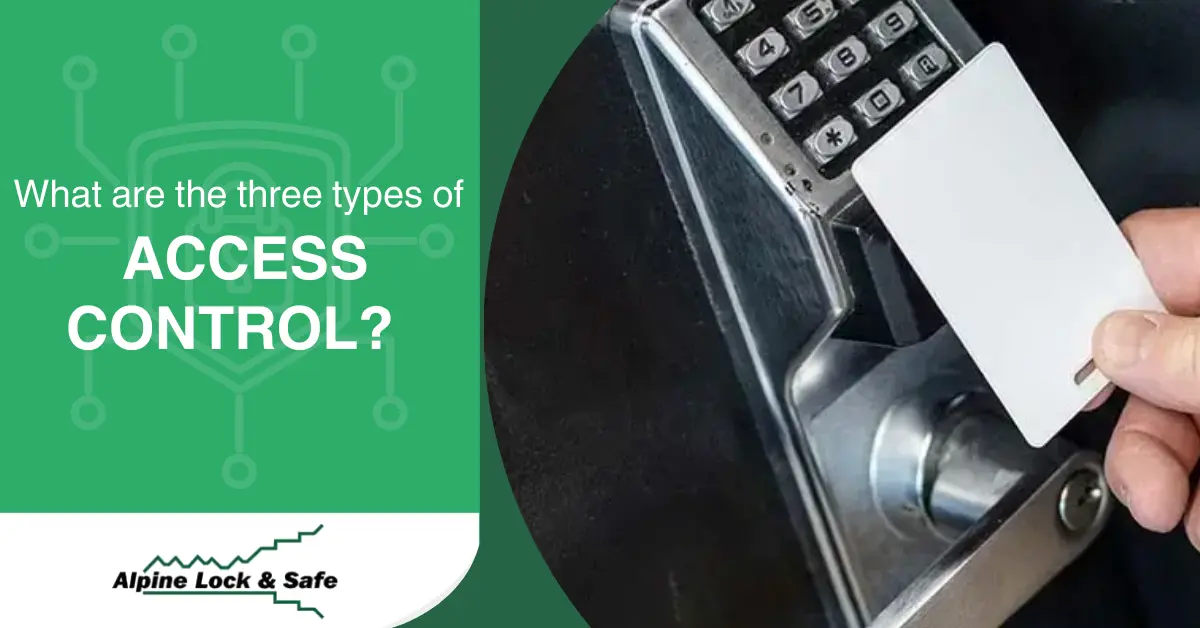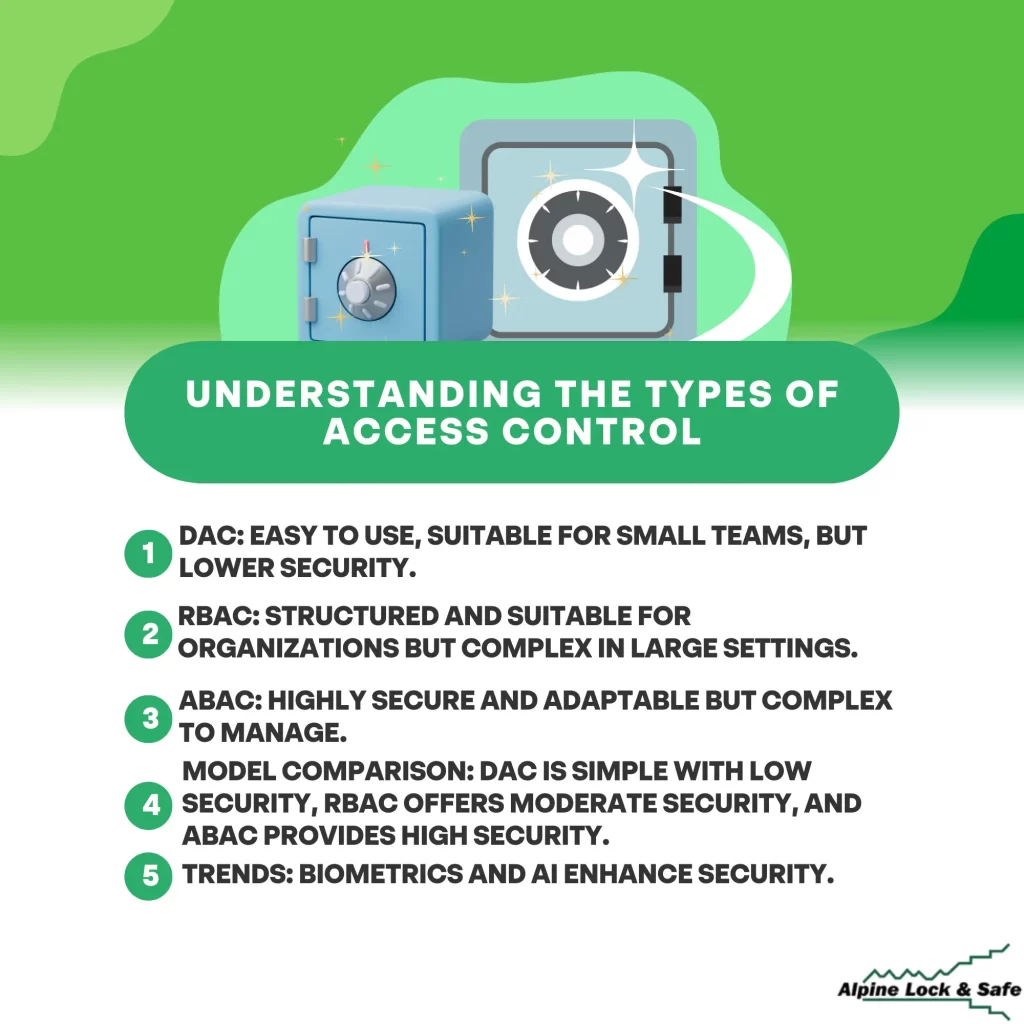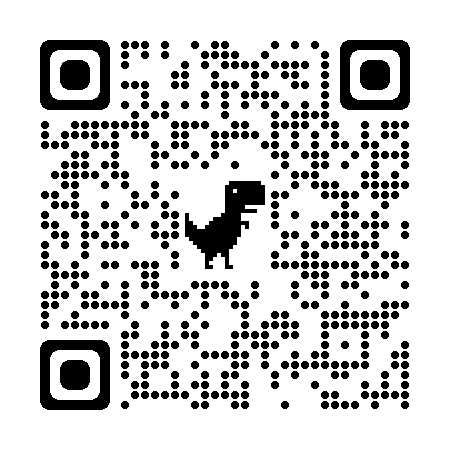Imagine you’re collaborating on a critical business document with a colleague. You share the file, granting them editing permissions. But what if they accidentally (or intentionally) share it with someone unauthorized? This scenario highlights the crucial role of access control in our digital age. What is access control in security? Access control acts as a digital gatekeeper, meticulously regulating who can access sensitive information and resources.
In the physical world, locks and keys control access to buildings and rooms. In the digital realm, access control systems employ sophisticated mechanisms to safeguard data, applications, and systems. These systems determine who can access what, when, and from where, ensuring only authorized users possess the necessary digital keys.
The Three Pillars of Access Control
Let’s learn more about what are access controls. There are three primary access control models, each offering a distinct approach to securing your digital domain:
- Discretionary Access Control (DAC): This user-centric model grants ownership privileges. Users with resource ownership (like a document or folder) can determine who has access and what level of access (read, edit, delete) they possess. Imagine sharing a house key; the homeowner (user) decides who gets a copy (granted access).
- Role-Based Access Control (RBAC): This hierarchical model assigns permissions based on predefined roles within an organization. Think of job titles like “administrator” or “editor.” Each role is associated with specific permissions, streamlining access control for complex environments. Imagine a library; a librarian role grants access to restricted sections, while a patron role enjoys limited access.
- Attribute-Based Access Control (ABAC): This fine-grained model offers the most granular control. Access decisions hinge on a combination of dynamic attributes, such as user location, device type, time of day, and even security clearance. Imagine a bank; access to high-value accounts might require specific attributes like location (in-branch) and time (business hours) in addition to user role (teller).
Discretionary Access Control (DAC): Keeping It Simple
DAC offers a user-friendly approach, allowing resource owners to manage access permissions directly. This flexibility makes it ideal for small teams and personal data management. Sharing documents on Google Drive or assigning permissions on social media profiles are examples of DAC in action. However, DAC’s simplicity can be a double-edged sword. Accidental permission misconfigurations or human error can expose sensitive data. Additionally, managing complex permission structures across numerous resources can become cumbersome.
Who’s the Boss? Understanding Role-Based Access Control (RBAC)
RBAC introduces a structured approach, assigning permissions based on predefined roles within an organization. This simplifies administration and enhances security by ensuring access aligns with job functions. Roles inherit specific permissions, creating a clear hierarchy of access privileges. For instance, an RBAC system might grant an “accounting manager” role access to financial reports, while an “accounts payable clerk” role might only have access to specific invoices. While RBAC fosters order, defining and managing a multitude of roles in large
organizations can be challenging. Additionally, potential role conflicts can arise if a user possesses multiple roles with overlapping or contradictory permissions.
Beyond Roles: The Granular Power of Attribute-Based Access Control (ABAC)
ABAC steps up the game by offering the most granular control over access. It leverages a policy engine that evaluates a combination of dynamic attributes to grant or deny access. This contextual approach allows for highly secure and adaptable access decisions. Imagine a healthcare system; a doctor might be given access to a patient’s medical records based on attributes like their role (physician), location (hospital), and specific patient ID. ABAC’s power comes at a cost, however. Defining and managing intricate attribute-based policies can be complex, requiring specialized expertise. Additionally, evaluating a multitude of attributes can introduce performance overhead in specific systems.
Choosing the Right Access Control for You: A Head-to-Head Comparison
Here are the types of access control systems and the key differences between DAC, RBAC, and ABAC:
Discretionary Access Control (DAC)
- Ease of Use: High
- Security Level: Low to Moderate
- Scalability: Low
- Suitability: Small teams, personal data
Role-Based Access Control (RBAC)
- Ease of Use: Moderate
- Security Level: Moderate to High
- Scalability: Moderate
- Suitability: Organizations with defined roles
Attribute-Based Access Control (ABAC)
- Ease of Use: Low
- Security Level: High
- Scalability: High
- Suitability: Highly secure environments with complex access needs
The optimal access control model depends on your specific requirements. DAC might suffice for a personal Dropbox account. For a large corporation that manages sensitive financial data, RBAC or ABAC would be more appropriate.
The Future of Access Control: Emerging Trends and Innovations
The access control landscape is constantly evolving. Controlling doors and other entrances is crucial. Biometric authentication, which utilizes unique physical characteristics like fingerprints or iris scans, is gaining traction. Machine learning algorithms are being implemented to detect and prevent unauthorized access attempts. Continuous authentication, which verifies user identity throughout a session, further enhances security by mitigating the risk of stolen credentials. These advancements promise a future of more secure and user-friendly access control mechanisms.
Conclusion
Access control serves as the cornerstone of digital security, safeguarding our valuable data and resources. Understanding the three main models – DAC, RBAC, and ABAC – empowers you to choose the most suitable approach for your specific needs. As technology advances, access control will continue to improve using tools like biometrics and machine learning for a more secure and seamless digital experience. Don’t wait for a security breach to highlight the importance of access control. Take action today to implement robust access control measures and safeguard your digital assets.
Secure Your Breckenridge Property with a Free Access Control System Consultation
When it comes to implementing a secure and effective access control system in Breckenridge, CO, partnering with a qualified professional is crucial. Alpine Lock & Safe, a trusted provider of security solutions in Breckenridge, CO. We offer comprehensive access control system installation and maintenance services. Ourskilled technicians can create and implement a custom system to protect your property and data. Whether you require a simple keycard system for your office or a more sophisticated multi-factor authentication solution, we have the expertise to deliver peace of mind. Schedule a free consultation today.







